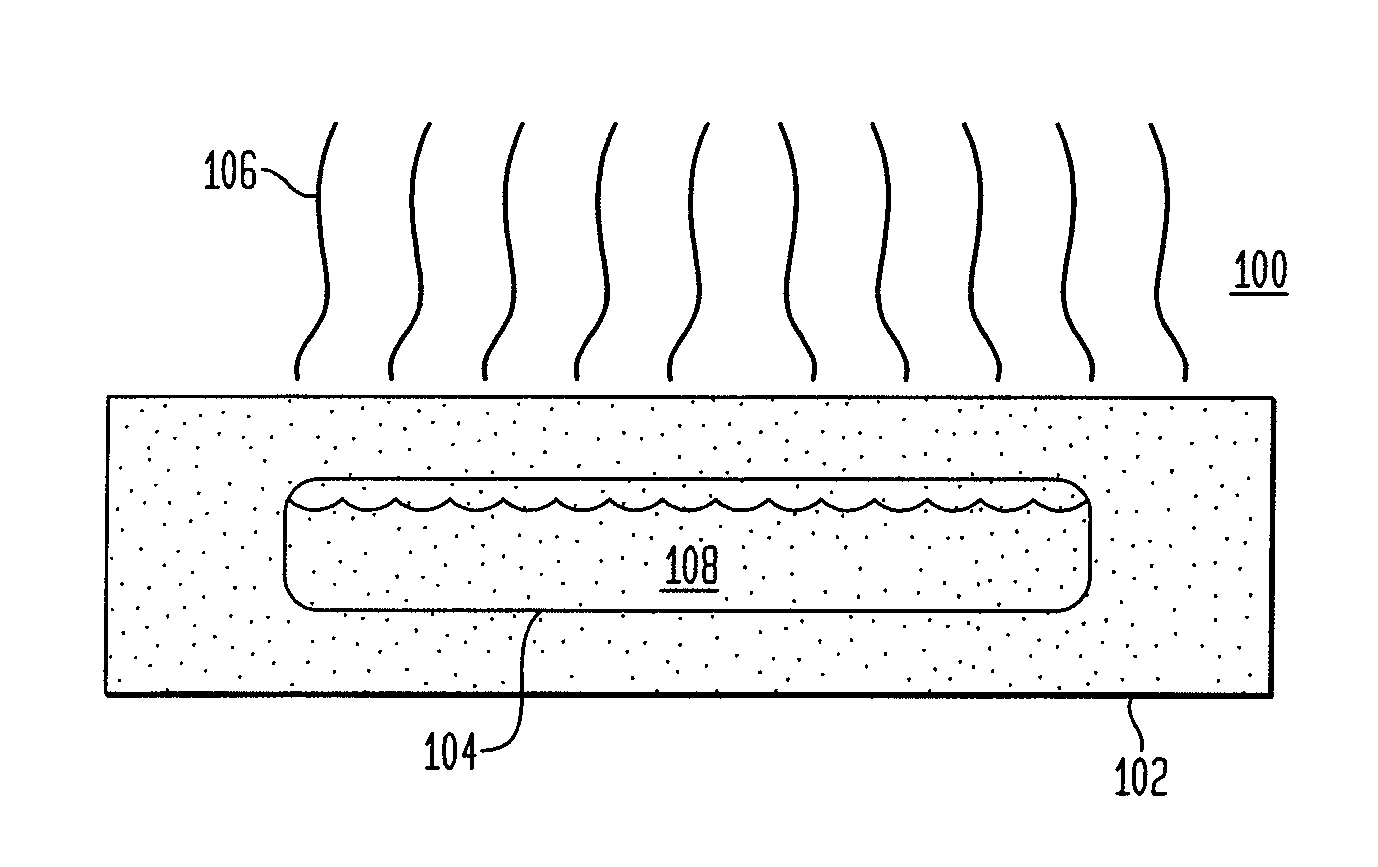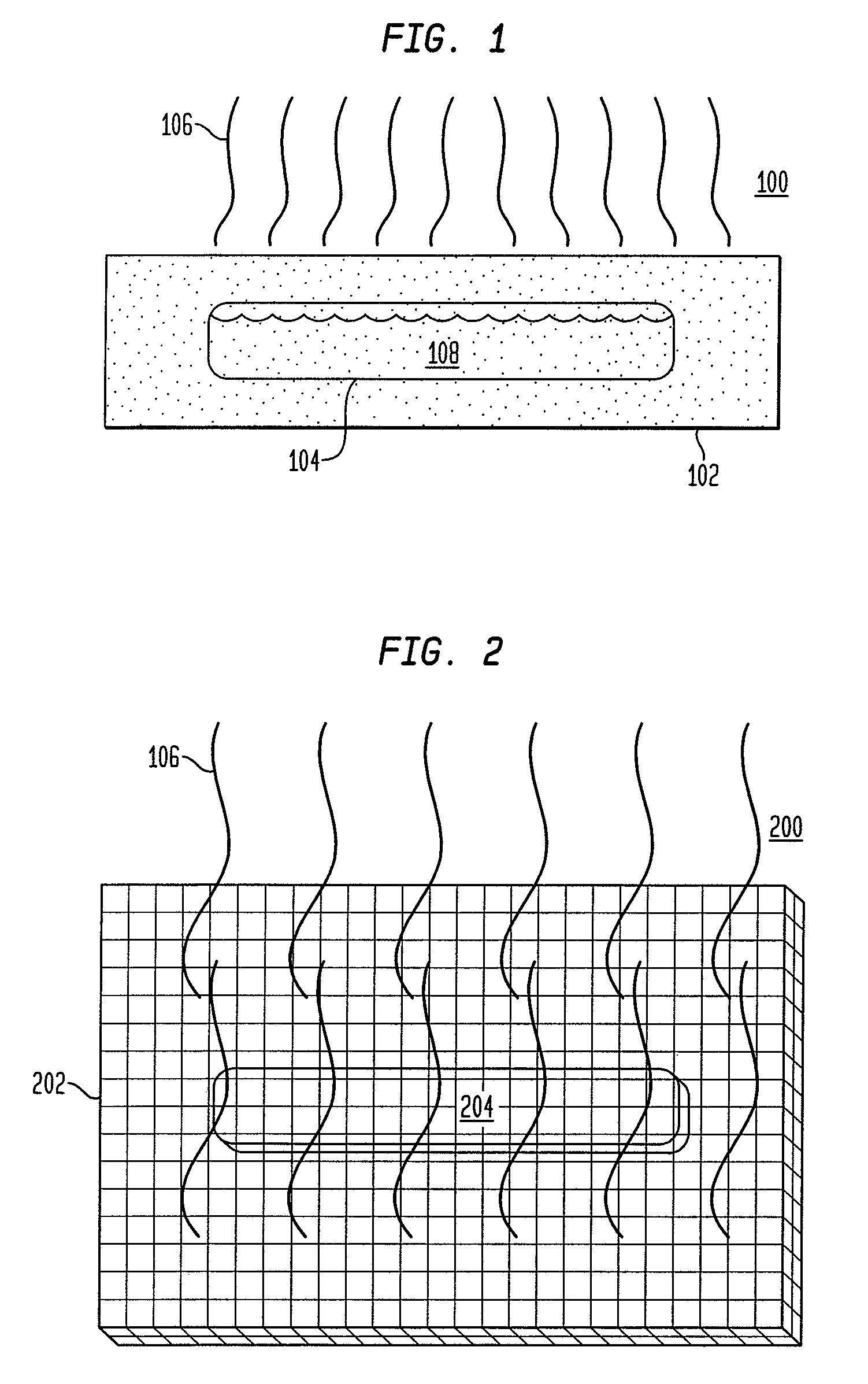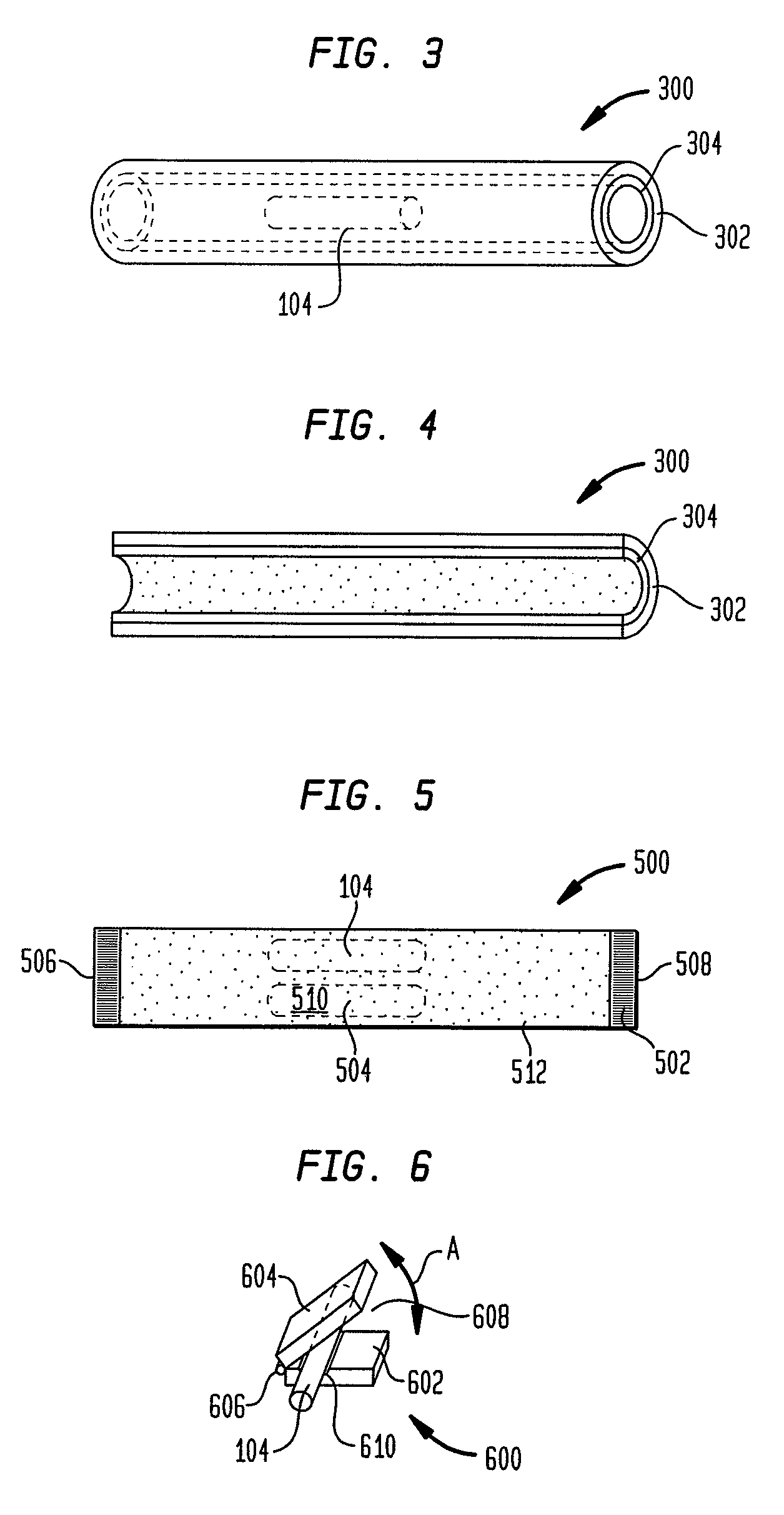Method for developing latent fingerprints
a technology of latent fingerprints and apparatuses, applied in the field of apparatuses for developing latent fingerprints, can solve the problems of unwanted spillage, increased waste, and wrong amount of cyanoacrylate monomer applied to the pad,
- Summary
- Abstract
- Description
- Claims
- Application Information
AI Technical Summary
Benefits of technology
Problems solved by technology
Method used
Image
Examples
Embodiment Construction
[0027]As shown in FIG. 1, the present invention is an apparatus 100 having a porous, e.g., a cellulosic fiber housing 102 impregnated with any cyanoacrylate catalyst. A breakable capsule 104 (or capsule 104) of liquid cyanoacrylate monomer 108 is contained within an internal chamber of the housing 102.
[0028]In the preferred and simplest embodiment, the housing 102 is a porous material. For example, the housing 102 is a cellulosic fiber material of paper, fibrous textile, plastic, metal, resin, composite, and the like. Alternatively, the housing 102 may be made of a perforated material, e.g., plastic, composite, paper, or resin coated paper, that has holes, perforation, slits, or mesh. Regardless of the particular material, the housing 102 must have a means for emitting vapors 106 as well as for containing a cyanoacrylate catalyst. The material of the housing 102 is preferably impregnated with cyanoacrylate catalyst. It is well known to one of ordinary skill in the relevant art to im...
PUM
| Property | Measurement | Unit |
|---|---|---|
| diameter | aaaaa | aaaaa |
| length | aaaaa | aaaaa |
| area | aaaaa | aaaaa |
Abstract
Description
Claims
Application Information
 Login to View More
Login to View More - R&D
- Intellectual Property
- Life Sciences
- Materials
- Tech Scout
- Unparalleled Data Quality
- Higher Quality Content
- 60% Fewer Hallucinations
Browse by: Latest US Patents, China's latest patents, Technical Efficacy Thesaurus, Application Domain, Technology Topic, Popular Technical Reports.
© 2025 PatSnap. All rights reserved.Legal|Privacy policy|Modern Slavery Act Transparency Statement|Sitemap|About US| Contact US: help@patsnap.com



